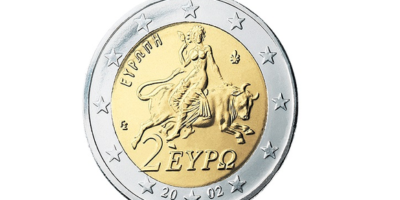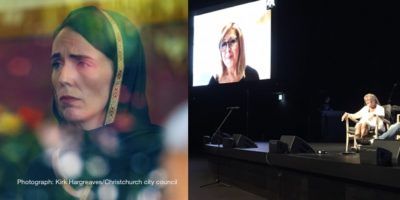A spiritual faultline meandering from the Barents Sea in the north to the Mediterranean in the south has produced a tragic legacy in European history. To understand Europe today requires an awareness of the causes of this faultline and its repeated aggravations through the centuries. To heal this sad rupture is beyond the competence of the United Nations and the European Union. It is a task–and an obligation–for the Christian faith communities.
In the Protestant and Evangelical worlds, the so-called Great Schism between the churches of the East and West belongs to a chapter of church history lost in pre-Reformation murkiness, seemingly irrelevant to the contemporary struggle for survival in a secular age.
And yet it continues to invade our daily headlines and provide the backdrop to geo-political tensions threatening our world today. The First World War was triggered in Sarajevo, on this faultline. The Cold War simmered between opposing alliances drawn up along this faultilne. The Bosnian war was fought between the spiritual heirs of the original warring parties. Malaysian Airlines flight MH17 was shot down over this faultline nearly five years ago in a tug-of-war concerning conflicting east-west allegiances, traceable to this decisive severance. The recent schism between the Russian Orthodox Church and Constantinople concerned the granting of independence to the Ukrainian Orthodox Church, part of the broader political conflict around Russia’s annexation of Crimea, military intervention in Ukraine, and the latter’s wishes to join the EU and NATO.
It is a rift which erupted in the eleventh century, although it had a long prelude and multiple grievances. The broken relationship between the Eastern and Roman churches lasted over nine whole centuries, before eventually the mutual excommunications were lifted in a joint declaration issued by Pope Paul and Patriarch Athenagoras during the Second Vatican Council in 1965. Communion however was not yet restored and significant hurdles remained.
Bedrock
A core issue leading to the schism revolved around the Nicene Creed, formulated at the First Ecumenical Council in 325 in Nicaea, not far from today’s Istanbul, still referred to as Constantinople by the Orthodox community. This creed clarified the church’s beliefs concerning the Trinity, and thus definitions of heresy concerning non-Trinitarian teachings such as Arianism.
The creed has been accepted by Orthodox, Oriental, Catholic, Anglican, Reformed and other Protestant churches throughout the centuries–with the exception of one word: ‘filioque’.
This creed is the bedrock of the worldview through which European peoples came to view reality as the story of Jesus spread from the Mediterranean up through the European peninsular to the islands of Britain, Ireland and Iceland. It is the creed that verbalised Europe’s common heritage, a belief in the Triune God, the original and ultimate expression of unity-in-diversity towards which the European project still strives. It is the creed that made such a dream possible. It is the creed that gave Europe a fundamental unity.
And yet it became the creed that divided Europe–in no small measure over an argument concerning the Holy Spirit.
Convened in Nicaea by the new Roman emperor, Constantine, representatives from five patriarchal cities of Jerusalem, Antioch, Alexandria, Rome and Constantinople met to agree on church teaching. Over time, Jerusalem, Antioch and Alexandria were to come under Moslem rule and lose their influence, leaving the Christian world polarised between Rome and Constantinople. Various issues began to drive a wedge between these two ecclesiastical hubs, including Latin-Greek linguistic and cultural tensions; disagreement about the supremacy of the Bishop of Rome as Pope; and the role of icons in worship.
Mistrust
However, the ‘filioque’ controversy catalised the final rupture in 1054. The Western church first added this phrase as early as 589 to the section of the creed concerning the Holy Spirit ‘who proceeds from the Father’. Translated ‘and the Son’, its inclusion was meant to show that both Father and Son were fully God. But the Western church did not consult the Eastern church about this addition.
The resulting 900-year broken relationship, with mistrust, name-calling and even the sacking of Constantinople by Crusaders, profoundly shaped historical developments of the second millennium, including paving the way for the Ottoman conquest.
Since Vatican II, efforts to repair the breach have continued, with John Paul II talking of the Church ‘breathing with two lungs’, the more rational Latin temperament complementing the mystical and contemplative Eastern spirit.
Pope Francis and Patriarch Bartholomew have called for a new Council of Nicaea in 2025, the 1700th anniversary of the first council. Francis has declared that church unity does not come through theological agreement, however, but through relational unity; and that unity does not come through other churches ‘returning to the Mother Church, but when we all move closer to Jesus’.
At the State of Europe Forum, held in Orthodox Romania May 9 & 10, we will celebrate the common heritage this creed has laid for Europe, and the commonalities in Christ which supercede our differences.
Till next week,



[…] I invited Fr Mavrichi to discuss the role of the creed in the shaping of Europe. In a previous ww I had written about the creed which both united Europe by giving a common framework of faith […]
[…] Padre Mavrichi a discutere sul ruolo del simbolo nel modellamento dell’Europa. In un pensiero della settimana precedente, avevo scritto sul simbolo che aveva sia unito l’Europa dandola un quadro comune […]